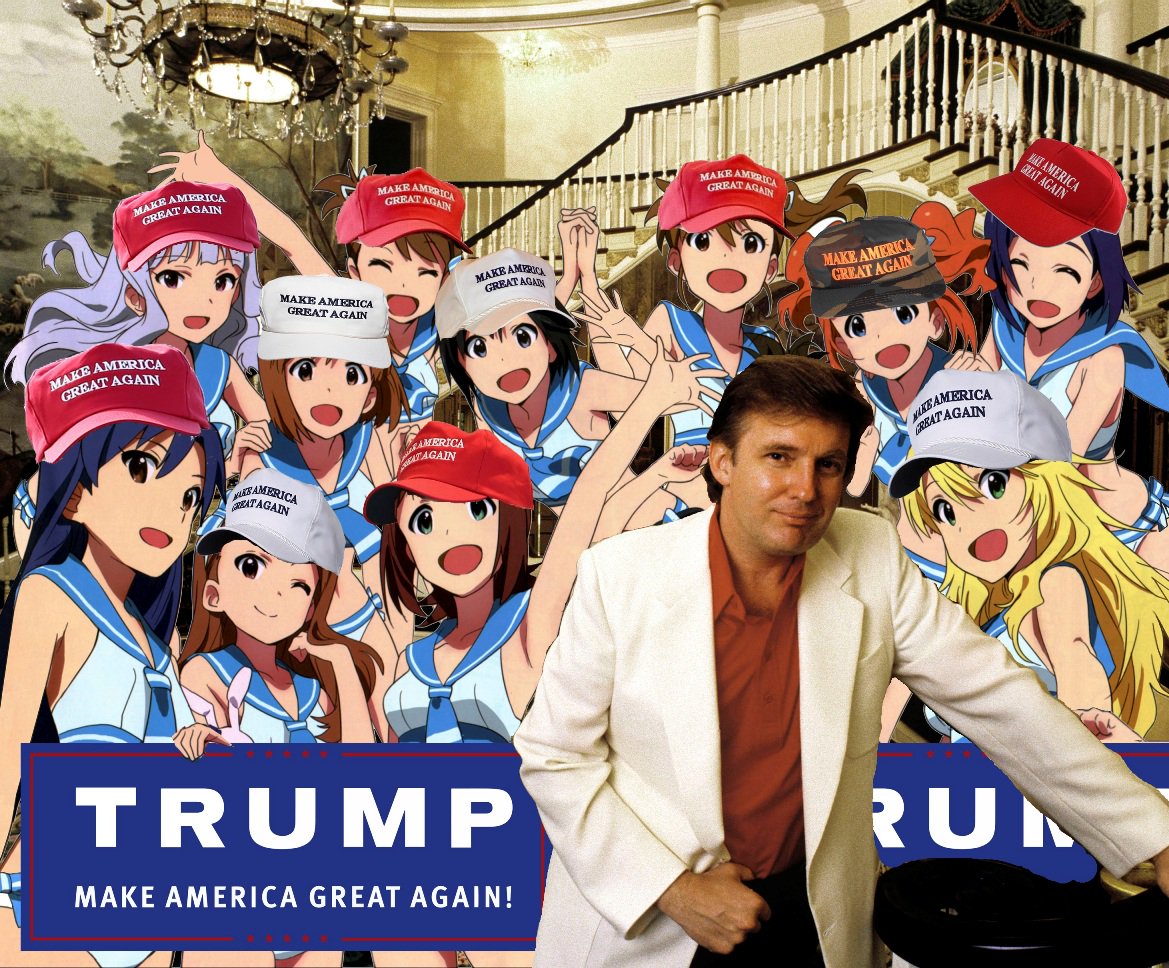Anime
During the 2016 presidential election, images of female anime characters wearing Make America Great Again hats flooded the internet bearing the hastag #trumpanime. While the appropriation of anime as symbols in far right and white supremacist memes seems to be contradictory to their doctrine of white racial purity, it in fact supports their anti-feminist and racist narratives of white male domination.
The strange affinity white supremacists have with anime, and their specific usage of images of anime girls, is connected with the fetishization of Asian women as subservient, pliable, and hypersexual. Such stereotypes are commonly seen in pornography, but can be traced back to America’s postwar military occupation of Asia, where thousands of women in occupied countries like Japan, Korea, and Vietnam worked in the sex industry serving US military patrons. 1 In addition, Asian women, particularly as depicted in anime, are perceived as being small, slim, and fair skinned, in adherence with white standards of femininity. This conception stands in stark contrast against the feminazi archetype, which often depicts feminists as aggressive, angry white women. Many prominent members of the alt-right including Andrew Anglin, the founder of the neo-Nazi website The Daily Stormer and prominent white nationalist Richard Spencer, are dating or have dated Asian women. “There is something about the Asian girls,” Spencer once said to Mother Jones. “They are cute. They are smart. They have a kind of thing going on.” 2
The appeal of anime to white supremacists may also be attributable to the Westernization of anime characters, which occured in tandem with the expansion of US political and military power in East Asia. Anime characters are often drawn with distinctly Western features—blonde hair, large blue and green eyes, long legs, and large breasts. According to media theorist Wendy Hui Kyong Chun, Japanese anime characters originally were drawn with Asian features, but began to be “whitewashed” after WWII Japanese reconstruction under the domination of the US. 3 Thus, as M. Ambedkar argues in the essay The Aesthetics of the Alt-right, “The Westernization of the anime girl is appealing to the alt-right viewer because it represents the perceived successes of Imperial domination, to the extent that a foreign adversary ends up taking care of the whitewashing itself.” 4 According to one user posting on Stormfront, a white nationalist and white supremacist online forum, “Japanese cartoons mostly celebrate the white race and our mythology. They have a weird fascination with us like some whites have for the red man. They are also 100% Talmud free content. They glorify us.”
1 Audrea Lim. "The Alt-Right’s Asian Fetish." New York Times, Jan 6, 2018.
2 Lim. "The Alt-Right’s Asian Fetish."
3 Wendy Hui Kyong Chun. Control and Freedom Power and Paranoia in the Age of Fiber Optics. (Cambridge: MIT Press, 2006), 214.
4 M. Ambedkar. "The Aesthetics of the Alt-Right." title, Feb 22, 2017.

